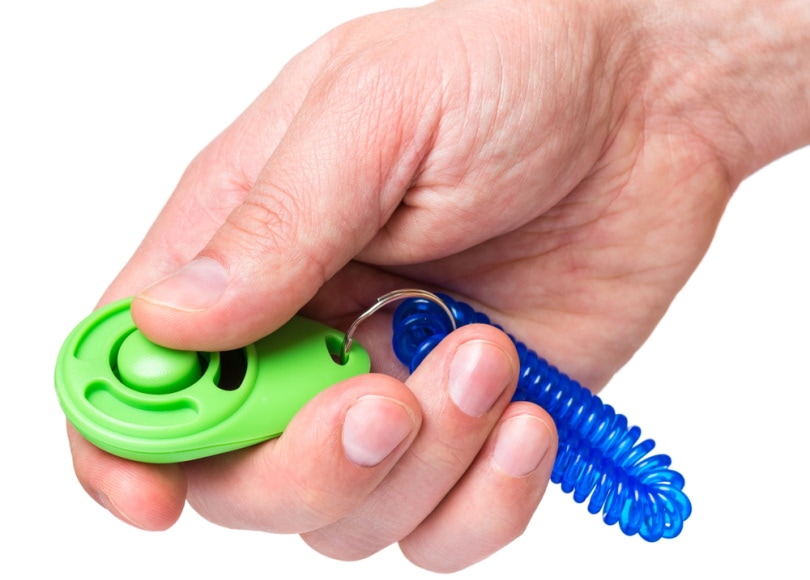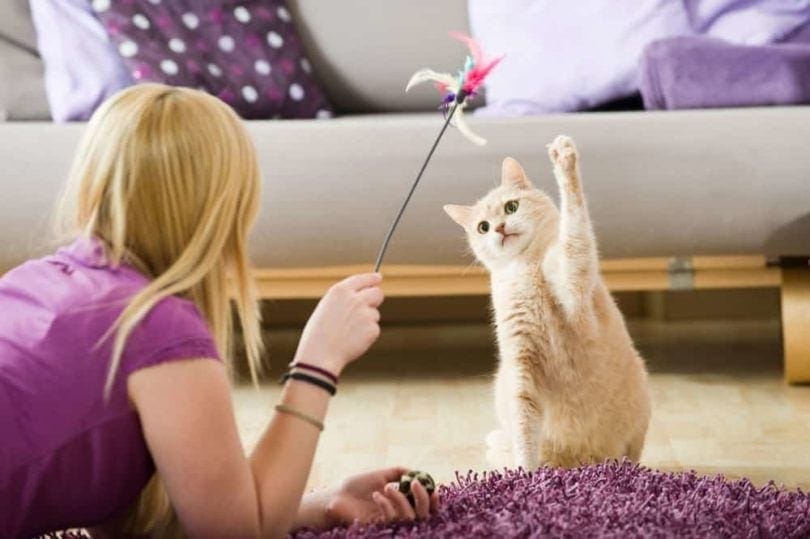
Kittens are cute little bundles of curiosity that always want to be involved in everything going on around them. This pure and gentle inquisitiveness is exactly what makes kittens great candidates for obedience training! Getting your cat doing “dog” tricks isn’t as difficult as you might think, and you can probably get started right away! Here’s a straightforward guide to training your cat to do tricks like a dog!
Is Training Your Cat Easy?
Training your cat is definitely harder than training a dog. Cats like it when their people are happy, but they don’t have the same service-oriented personalities that we associate with dogs. They want you to be happy…just not enough to jump through hoops for it!
However, if you can figure out what motivates your cat, you can get them moving and performing for guests. In this way, training them is exactly like training a dog. There’s just a narrower scope of motivations that will be adequate to get your cat to do tricks.

Top 4 Tips on How to Train Your Cat
1. Find Your Cat’s Motivators
Try to determine what makes your cat happiest. Are they a foodie (like most cats)? Do they love to play? Do they have a favorite toy? Any of these things can help you get your cat trained. They’ll be able to. A lot of cats are heavily food motivated (we know ours are!) and will happily start doing tricks when food is introduced as a reward.

2. Keep Training Sessions Short
Cats don’t have particularly good attention spans. Kittens especially can only stay focused for about five to ten minutes before they start to become distracted by anything else, really. So, keep training sessions short to give your cat a chance to recalibrate after the session.
3. Complete Training Sessions on a High Note
It’s better to end your training sessions early than stretch them out to the point where your cat is no longer paying attention. End your session on a high note, even if it means the session is a little bit shorter than you’d wanted it to be. It will help your cat learn to associate training with good feelings and positive reinforcement.

4. Reinforce Training Frequently
The more frequently you train your cat, the more easily they’ll pick up the skills you’re trying to teach them. Doing short, frequent sessions will have more of an impact than longer, less frequent sessions. So, do more frequent sessions for five or ten minutes to help your cat learn the ropes.
What Is Clicker Training?
Clicker training is often used with dogs to help keep their attention and reinforce behavioral modification. Clickers make a clicking sound when the button on them is pressed. When you click the clicker and then give your cat a treat, your cat learns to associate the sound of the clicker with a treat. Thus, you must be judicious with your clicks since you must always follow the click with a treat.
Clicker training is generally considered to be a dog training method but is usable with cats as well. Cats have been known to respond rather well to clicker training when it’s introduced to them.

Fun Tricks to Teach Your Cat
The Key to Successful Training
The key to training your cats is consistency. If you don’t train them consistently and often, they’ll forget the commands you’ve taught them, just as a human will forget information or skills they don’t use regularly.

Can You Teach an Old Cat New Tricks?
Kittens are the best candidates for training since they’re young and impressionable. However, you can train an older cat if you want to. It will just take more consistency and repetitions than it would for a young cat. They may also retain less of the information and forget commands more easily when they aren’t regularly reinforced.
Training an older cat is the same as training a kitten. You’ll need to find what motivates them and use that to help your cat learn what you’re trying to teach them.
Final Thoughts
Training your kitten can be a fun way to bond with your kitten. There are a variety of tricks you can teach to your kitten that will impress even the most cold-hearted members of your family. Anything a dog can do, a cat can do with attitude. So, don’t lose heart if your cat seems uninterested at first. Experiment with different motivators to help your cat get excited for learning!
Featured Image Credit: Josep Suria, Shutterstock








